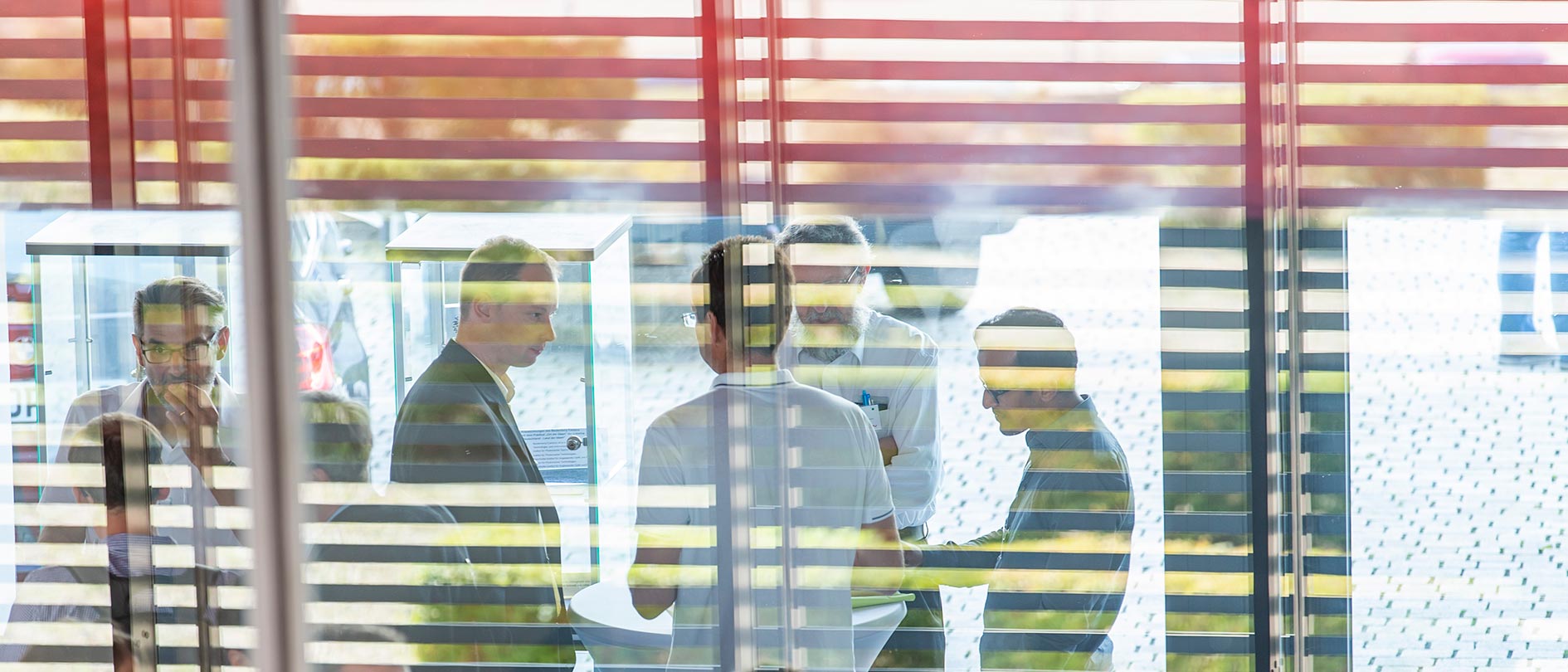The European Union is providing 4.3 million euros in funding for a new project to research high-security quantum communication via satellites. In the QUDICE project, an international team of researchers, including members of the Fraunhofer Institute for Applied Optics and Precision Engineering IOF, aims to develop components for space-based distribution of quantum keys. The new hardware is expected to become one day the basis of a European satellite network. At Fraunhofer IOF, a miniaturized source for generating entangled light particles in the telecommunications wavelength range will be built specifically for this purpose. The project has recently started its three-year term.
Using entangled light particles to communicate in Europe in a practically tap-proof manner – a goal towards which an international team of EU researchers is working. Within the new QUDICE project, they want to develop together components and systems for space-based quantum key distribution. In this way, QUDICE wants to make a significant contribution to one day being able to realize a European network of satellites for quantum-based communication. Such a network will specifically protect the privacy of European institutions, companies, and citizens, while strengthening Europe’s independence from critical (quantum) technologies from abroad.
Compact and highly efficient photon pair source for use in space
Within the framework of QUDICE, a miniaturized, space-qualified polarization-entangled photon pair source (EPS) in the telecommunications wavelength range will be built at the Fraunhofer IOF in Jena. This source will later be integrated into a satellite. The photon pair source must therefore meet special requirements for use in space: For example, it must be particularly small and compact. The aim is to achieve a size similar to that of a one liter milk carton.
The researchers at Fraunhofer IOF must therefore miniaturize all the individual components of the source and integrate them on several chips. Furthermore, the source must be able to withstand strong vibrations as well as large temperature fluctuations, which occur during the launch of the satellite on its way into space. The photon pair source will therefore be based on recent advances in nonlinear optics and engineering. The goal for the new source is to achieve 10^9 pairs of entangled light particles per second and a bit rate that exceeds the current state of the art by several orders of magnitude.
Fraunhofer IOF will work closely with the Institute of Photonic Sciences (ICFO) from Spain – one of twelve partners in the QUDICE project – to construct the photon pair source in space-qualified quality. Together, the institutes will develop a novel design for the entangled photon source, which will allow the integration of the components and thus a particularly compact setup. To this end, ICFO will design specific subsystems for each chosen QKD implementation, while Fraunhofer IOF will implement them. Subsequently, the Fraunhofer Institute in Jena will characterize all opto-electronic components, while ICFO will perform the QKD implementations.
Strengthening Europe’s technological sovereignty in quantum technologies
Already in 2019, an agreement between the EU Commission and the European Space Agency (ESA) took the first step towards the development of a highly secure pan-European infrastructure for increased data security. Quantum key distribution represents a crucial enabling technology in this regard. QUDICE is intended to drive forward the corresponding research and development work. The project is therefore being funded by the European Union within the framework of the »Horizon Europe« program with 4.3 million euros. 450,000 euros of this will flow into the work at Fraunhofer IOF in Jena.
The realization of the project goal requires expertise from a wide range of fields – from quantum physics, mechanical engineering, and optical engineering to radio communications, satellite technology, and space technology. Through the collaboration of world-leading research institutions as well as technology developers and manufacturers, but also system integrators, an interdisciplinary consortium is formed in which leading experts from their respective fields are gathered.
In addition to the Fraunhofer IOF, the partners of the QUDICE project are: University of Padova, ThinkQuantum SRL, Stellar Project SRL, Argotec, Thales Alenia Space (all Italy), The Institute of Photonic Sciences ICFO, Quside SL, Sateliot IOT Services SL (all Spain), Centre National de la Recherche Scientifique, Sorbonne Université (all France), L‑Università ta‹ Malta (Malta).
Researchers at Fraunhofer IOF have repeatedly demonstrated the exchange of quantum keys over different paths and distances, e.g., using free beams within a city or via optical fibers laid in the ground between different metropolitan regions. However, quantum key exchange via satellite also enables connectivity to areas where fiber connectivity is not possible or limited, e.g., offshore. Furthermore, space-based quantum key exchange provides a true backup in the event of a natural disaster that would destroy fiber-based infrastructures, or a widespread network outage.
